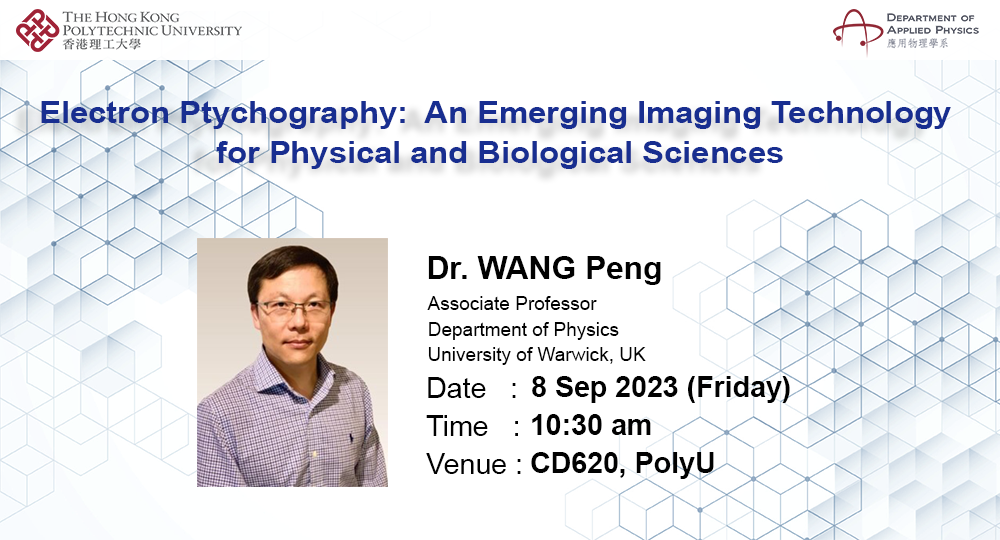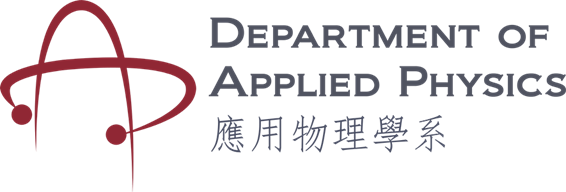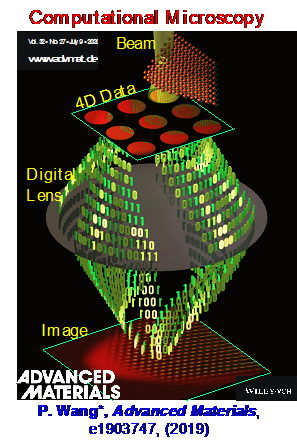AP Seminar - Electron Ptychography: An Emerging Imaging Technology for Physical and Biological Sciences

-
Date
08 Sep 2023
-
Organiser
-
Time
10:30 - 11:30
-
Venue
CD620, 6/F, Wing CD, PolyU Map
Speaker
Dr. Wang Peng
Summary
Coherent diffraction imaging (CDI) and ptychography have been widely used in X-ray synchrotron sources. The advantage of ptychography over traditional CDI is that it does not need prior information about the probe function and overcomes some of the other issues of CDI, such as non-unique solutions and a limited field of view.
In electron microscopy, ptychography has also attracted considerable interest due to its potential to achieve super-resolution without using aberration correctors. Unlike conventional imaging modes, the image-forming optics of ptychography replaced by computational methods (like a ‘Digital Lens’) using an array of electron diffractions collected by fast detectors (Below). New generation of direct detection cameras are particularly suited to ptychographic 4D data acquisition with new modes of operation, such as electron counting and fast acquisition. In this talk, I will review the current development and capabilities of this emerging imaging technology (electron ptychography) in my group for light atomic detecting, low dose imaging, 3D reconstruction, coupling to spectroscopy, EM field mapping, and cryogenic EM , which can then tackle characterization challenges across the physical and life sciences, ranging from ferroic and battery materials to biological macromolecules
Keynote Speaker
Dr. Wang Peng
Associate Professor
Department of Physics
University of Warwick
Peng Wang is an associate professor in the Department of Physics at the University of Warwick in the UK. Since 2012, He has held the position of professor leading a Sub-atomic Resolution Electron Microscopy Laboratory at Nanjing University, China. His research interests and strength have been in the applications of aberration-corrected STEM imaging and EELS to characterize advanced functional materials ranging from ceramics and semiconductors to biological materials and nano-materials, at the nano and atomic scales from two to three dimensions. He has also made pioneering contributions to the field of a technique of 3D imaging materials at the nano-scale using scanning confocal EM performed on a double AC-S/TEM. In addition, one of his current works is focused on the advanced coherent diffractive phase imaging technique, so-called Ptychography. His current research has been focused primarily on two areas: developing novel computational diffractive imaging techniques (ptychography, 4D STEM) for cryogenic electron microscopy (Cryo-EM), light atomic detecting (O, Li elements), low dose imaging (beam sensitive materials), 3D reconstruction and EM field mapping, which can then tackle characterization challenges across the physical and life sciences, ranging from battery materials to biological macromolecules. To date, he has published over 150 refereed journal articles. Google Scholar (H-index 57).





